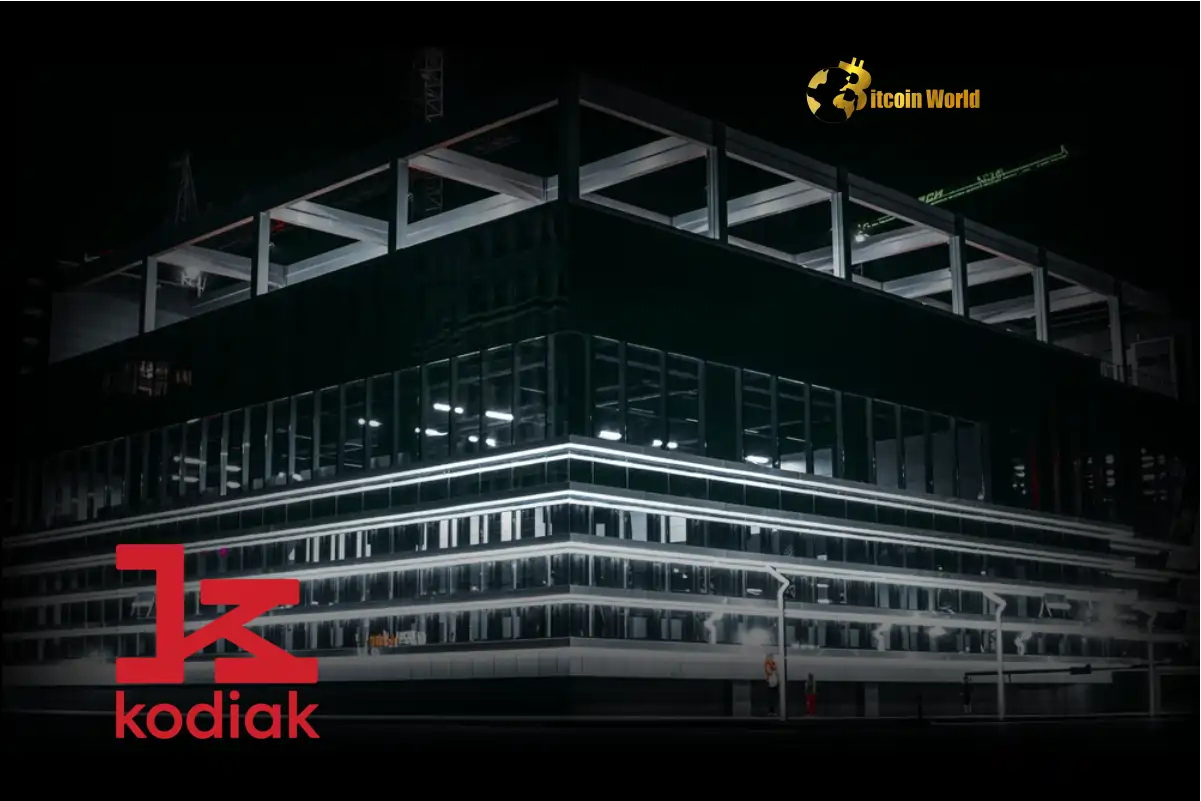Surprising SPAC Comeback: Kodiak Robotics Ignites IPO Market Hope
0
0

Remember the SPAC frenzy of 2021? It felt like every other company was going public via a Special Purpose Acquisition Company. Then, the hype faded, and SPACs seemed to lose their luster. But hold on – could we be witnessing a surprising SPAC comeback? Kodiak Robotics, a self-driving truck startup, is making headlines by choosing the SPAC route to the public market, merging with Ares Acquisition Corporation II. This bold move raises eyebrows, especially given the recent struggles and shutdowns in the autonomous vehicle sector, not to mention the generally shaky IPO landscape. Is this a lone wolf, or the start of a new SPAC wave? Let’s unpack this.
Is the SPAC Comeback Really Happening?
The big question on everyone’s mind: is the SPAC comeback real? Kodiak Robotics’ decision certainly suggests a pulse in the SPAC world. But it’s happening against a backdrop of considerable uncertainty in the broader IPO market. As highlighted on Bitcoin World’s Equity podcast, featuring Kirsten Korosec, Max Zeff, and Anthony Ha, the expected blockbuster IPO year of 2025 is looking less certain. Major players like Klarna and StubHub have pumped the brakes on their public debut plans. Investor Mark Goldberg even quipped that those waiting for a fintech IPO wave this year might be waiting a long time. So, why SPACs, and why now?
Here’s a breakdown of factors at play:
- Uncertain IPO Market Conditions: Traditional IPOs require extensive roadshows and market confidence. In a volatile market, SPACs offer a potentially faster and more certain path to going public, even if it means negotiating valuation with a SPAC sponsor.
- SPACs Seeking Deals: Many SPACs raised capital during the boom and are now under pressure to find merger targets before their deadlines expire. This creates a supply of SPACs looking for companies, potentially making it an attractive option for private companies seeking liquidity.
- Kodiak Robotics’ Bold Bet: For Kodiak, the SPAC route might offer access to capital and public markets at a time when traditional funding rounds are tougher to secure for autonomous vehicle companies, especially after the setbacks of Embark and TuSimple.
However, it’s crucial to remember the challenges that led to the SPAC market cooling down in the first place:
- SPAC Performance History: Post-merger SPAC performance has often been lackluster, with many companies underperforming market expectations. This has made investors wary.
- Regulatory Scrutiny: Increased regulatory attention on SPACs has added complexity and potentially deterred some companies and investors.
- Market Saturation: The sheer volume of SPACs in 2021 led to deal fatigue and a decline in investor enthusiasm.
Autonomous Vehicles and the IPO Landscape
Kodiak Robotics operating in the autonomous vehicles space adds another layer of intrigue. This sector has faced significant headwinds recently. The closures of Embark and TuSimple, mentioned in the original article, underscore the capital-intensive and long-term nature of developing and deploying self-driving technology. Going public via SPAC could be a strategic move for Kodiak to secure funding and visibility in a challenging environment. However, investor sentiment towards autonomous vehicles is currently mixed. While the long-term potential is undeniable, the path to profitability and widespread adoption remains uncertain.
Key Considerations for Kodiak Robotics’ SPAC Move:
| Factor | Potential Impact |
|---|---|
| Market Sentiment for Autonomous Vehicles | Could be a headwind if investors are still cautious about the sector’s near-term prospects. |
| SPAC Partner (Ares Acquisition Corporation II) | A strong and reputable SPAC sponsor can lend credibility and support to the deal. |
| Valuation and Deal Terms | Attractive valuation and deal terms are crucial to attract investors and ensure long-term success as a public company. |
| Execution and Roadmap | Clear execution plans and a realistic roadmap for commercialization will be vital to maintain investor confidence post-merger. |
Fintech IPOs: Still on Hold?
The article also touches upon the broader fintech IPO landscape, quoting Mark Goldberg’s pessimistic view on an imminent wave. This context is important because it highlights the general hesitancy in the IPO market, not just for tech but specifically for fintech companies which were also darlings of the previous IPO boom. If even fintech giants are delaying public offerings, it underscores the challenging market conditions and makes Kodiak’s SPAC move even more noteworthy – and potentially risky.
Other Key Highlights from the Equity Podcast:
- AI Voices Everywhere: Imagine Mark Zuckerberg, Elon Musk, and Jeff Bezos’s AI voices guiding you at crosswalks. The podcast discussed the increasing pervasiveness of AI voices and its implications.
- Figma’s IPO Plans: The Equity crew is eagerly anticipating Figma’s S-1 filing, raising questions about its financials, growth strategy, and market positioning.
- Hugging Face’s Robotics Push: Hugging Face’s recent acquisition signals a deeper dive into humanoid robotics, expanding its AI footprint beyond software models.
- OpenAI’s Model Updates: Updates to OpenAI’s o3 and o4-mini models, and the anticipation for the grand GPT-5 launch, keep the AI world buzzing with excitement.
Conclusion: A Glimmer of Hope or a False Dawn?
Kodiak Robotics’ SPAC merger is undoubtedly a significant event. Whether it signals a true SPAC comeback or is merely an outlier remains to be seen. It’s a bold move in an uncertain market, particularly for the autonomous vehicle sector. The broader IPO landscape is still hesitant, especially for fintech, suggesting that any SPAC revival might be selective and dependent on specific company strengths and market conditions. Keep a close watch on how Kodiak’s SPAC deal progresses and whether other companies follow suit – it could be a crucial indicator for the future of SPACs and the IPO market in general.
To learn more about the latest AI market trends, explore our article on key developments shaping AI features.
0
0
 Manage all your crypto, NFT and DeFi from one place
Manage all your crypto, NFT and DeFi from one placeSecurely connect the portfolio you’re using to start.





